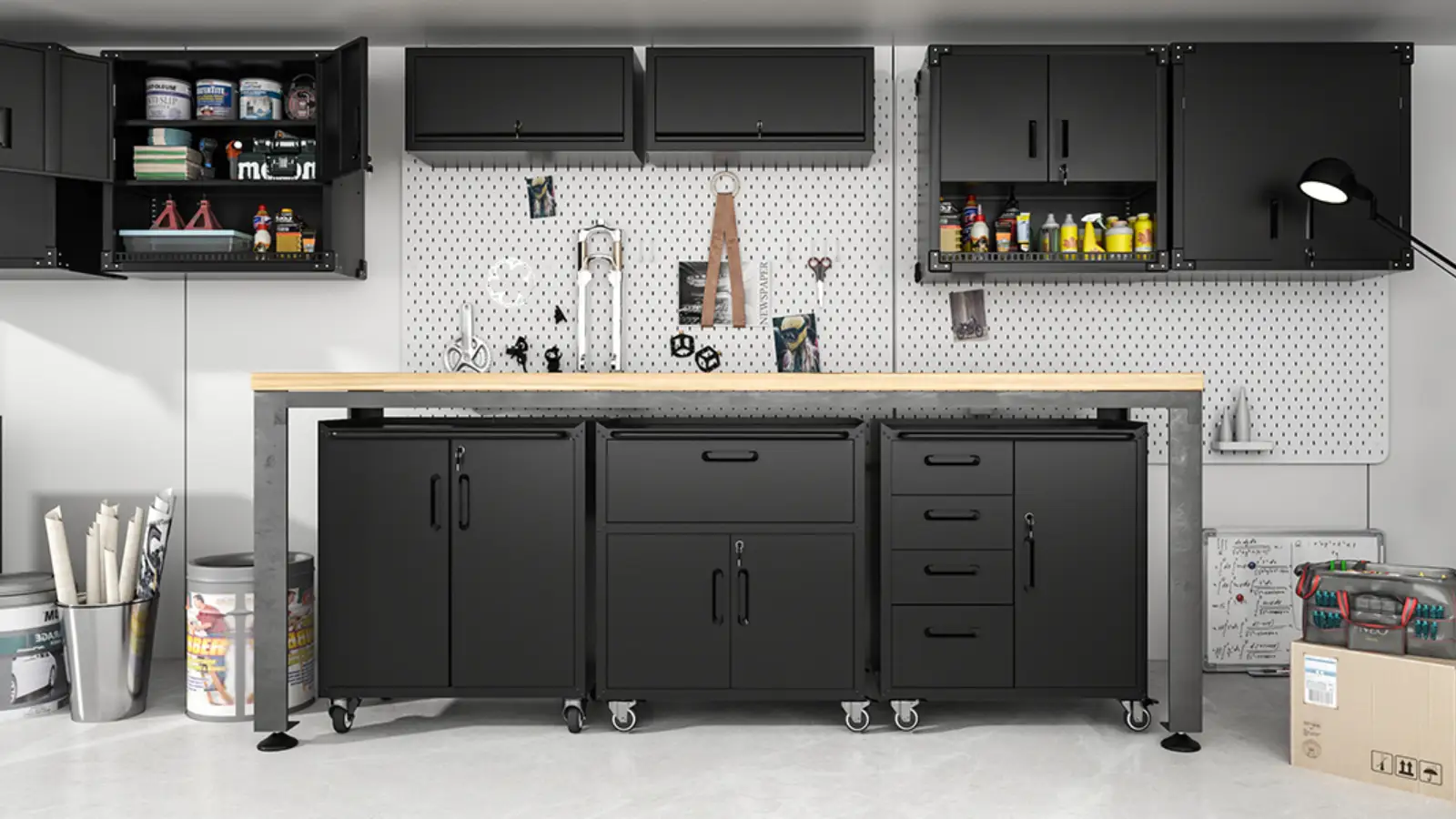A good tool cabinet can make all the difference when it comes to keeping your tools organized. Not only does your tablet cleaner keep your workspace neat, but it also helps optimize your operations and increases your productivity. But with so many options for tool cabinets, picking the right one can be a daunting task. But before you buy, here are some important things to consider in order to choose the best cabinet for your use.
Assess Your Space
Before getting into the process of selection, you need to observe the space where you want to feature your tool cabinet. Take measurements for how much space you have. Take into account height, width and depth, along with anything in the room that may block a door opening, like a shelf, window or door. It’s also important to think about accessibility: Will you be able to open the cabinet doors or drawers all the way?
Evaluate Your Tool Collection
Think about the size and kind of tools you have. There are many different sizes and arrangements of tool cabinets to hold various tools. If you have large power tools then you will also need a cabinet that has ample space and possibly adjustable shelves in order to properly store them. A cabinet (with drawers or pegboard style) may be sufficient for hand tools that are smaller in size. The ultimate first step to planning out your workshop cabinet is to create an inventory (a.k.a list) of all the tools you currently own.
Material Matters
The way a tool cabinet is made greatly impacts its durability and endurance. Common materials include:
Steel: Extremely durable and commonly used for industrial-grade cabinets. Steel cabinets do not rust and can hold a lot of weight.
Wood: Appealing and engaging; a great option for home workshops or craft rooms. On the flip side, wood cabinets can be less durable and are susceptible to moisture damage.
Plastic: Lightweight, often less expensive, but at most, not ideal under heavy weight or for long term use.
When choosing a material, think about the environment the cabinet will live in. A wood cabinet in a humid garage, for example, may not be ideal.
Storage Needs
Think about how you’re going to bring your tools together. Some cabinets feature a mix of shelves, drawers and hooks while others prioritize open shelving. Some of the more common storage solutions are:
That ultimate organization, probably up to the ceiling:
Shelves: Good for bigger items and you have that flexibility.
Drawers: Great for storing smaller tools and components, nice and organized.
Pegboards: Great if you want to easily access tools that you use often.
Bins and Trays: Useful for keeping screws, nails, and small parts organized.
A well-designed tool cabinet should also be able to accommodate your organization style while allowing you to both locate and store tools conveniently.
Mobility vs. Stability
Decide if you need a stationary tool cabinet or a mobile tool cabinet. If your workspace is stationary, a cabinet might me a more stable and sizable option. If you’re in and out of different locations or moving places often, then an on-wheels mobile tool cabinet can provide portability. The wheels should be durable and lockable, so it can easily be transported but can also be locked into place during use.
Budget Considerations
Tool cabinets are available at all price points. Determine how much you will be spending and do not waver. When tempted to choose the alternative with the lowest price, keep in mind that paying for a high-quality wardrobe now may be better loser over time. Read warranties and customer reviews for clues about the cabinet’s durability and performance over time.
Aesthetics and Design
Although useful is your first consideration, the appearance of your tool cabinet is also critical especially if it’s in a high adaptation locale in your garage or workroom. Many contemporary cabinets are available in stylish designs and colors that can enhance your workspace. You can have both style and utility!
Brand Reputation and Reviews
Do your research on the brand and read reviews before placing your order. Seek out reviews regarding durability, functionality and customer service. Generally, a reputable brand with good reviews is a safer bet and will be likely to see you into a decent product that meets your needs.
Conclusion
Selecting the right tool cabinet is the first steps to establishing an organized productive workplace. With careful thought about your workspace, what tools, materials and storage you require, how much mobility you desire, your budget, the aesthetic style you seek and the reputation of the manufacturer, it should be possible to find a cabinet that meets your functional and visual needs. Spend the time choosing, and you’ll be rewarded with a tool cabinet that will last you for decades to come. Happy organizing!





























